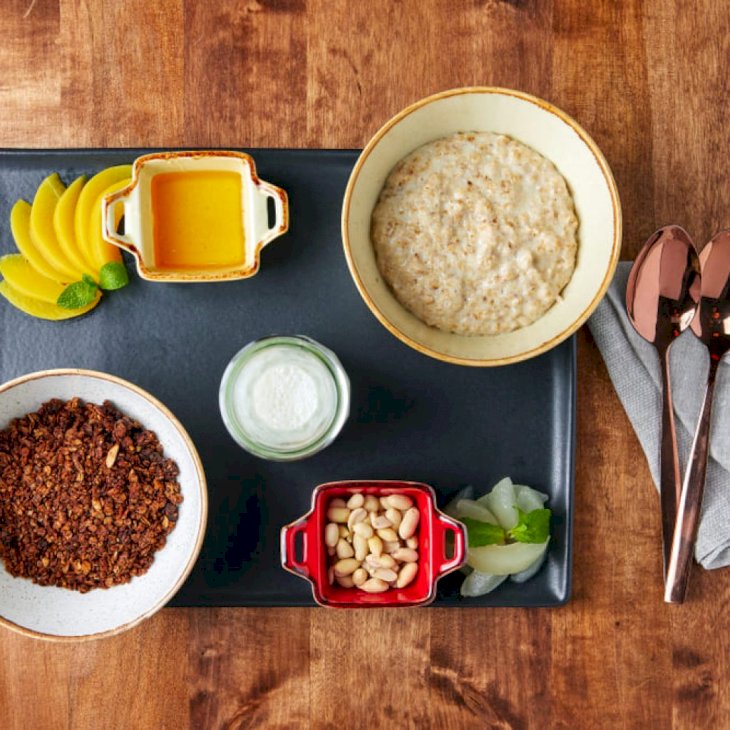
Blue Zones Diet: Secrets of The Longest Living People In The World
Ever wonder what it would be like to live till a hundred? It might seem like a far fetched idea to most of us but for people living in Blue Zones, it might be a reality.
So how do they do it? What is the secret behind their long life and good health? Many attribute it to their diet and the "Blue Zones Diet" has become a trend. Here is a look at everything you need to know about Blue Zones Diet.

Shutterstock
What are Blue Zones?
In 2004, longevity expert and National Geographic Fellow, Dan Buettner conducted a study to explore the healthiest places in the world. He developed the concept of Blue Zones.
Blue Zones are areas across the globe where people tend to live the longest. In these areas, people have much healthier lives with very low percentages of heart disease, cancer, diabetes, and obesity.

Shutterstock
Aside from the great health of the individuals living in blue zones, these areas also have another shocking fact in common. They all have extremely high concentrations of individuals who live to be over 100-years-old.
Ikaria, Greece; Okinawa, Japan; the province of Ogliastra in Sardinia, Italy; the community of Seventh-day Adventists in Loma Linda, California; and Costa Rica’s Nicoya Peninsula are all Blue Zones. Further research into the areas revealed that the secret to the health in the area included factors like physical items, architecture, and terrain.
Another key element to their health is their unique yet similar diets, especially when compared to the diets of the rest of the world. Their diet has been dubbed the "Blue Zone Diets"

Shutterstock
The Blue Zones Diet
Based on his research, Buettner suggests that if the average American ate a similar diet as those in the blue zones they could live an extra 12 years. This led to more than 150 dietary studies being done in Blue Zones to develop the Blue Zones Diet. Here is a look at some of the food eaten in different Blue Zones regions:
Nicoya, Costa Rica, has the lowest rate of middle-age mortality in the world. According to research, 70% of the people in Nicoya eat a diet of mainly beans, squash and corn tortillas. These foods are protein-rich and contain all nine essential amino acids.

Shutterstock
Okinawa, Japan is home to the longest living women on earth. The women are an average of 90 years old and they eat a diet that is 60% sweet potato. Sweet potato is known for its high “beta carotene” (Vitamin A) content. Vitamin is a powerful antioxidant.
On the other hand, Sardinia, Italy, is home to the longest living men on earth. According to research, this could be because the men drink up to 1-2 glasses of Cannonau Wine every day. The wine is filled with antioxidants and flavonoids that may be boosting their heart health.

Shutterstock
The next place with an impressively healthy population is the home of the Seventh Day Adventists, Loma Linda, California. They eat a “biblical diet.”
This special diet includes a lot of slow-cooked oatmeal, beans and nuts. All of which are high in omega-3 fatty acids and antioxidants that have been linked to reducing risk factors for heart disease.

Shutterstock
Basic Guidelines
Dan Buettner used his research to pen the book "The Blue Zones Solution." In the book, he drew up a basic guideline to use if you want to try the Blue Zones diet.
He recommends that 95% of your food items should be plant-based and that you never overeat. Instead, he advises that you should stop eating when you are 80% full. Another tip to keep in mind is to eat your largest meal in the morning and the smallest meal at night.
With regards to the actual food, Buettner says you should be eating half a cup of beans and a handful of nuts every day. Most importantly, you should try to cook most of your meals at home.

Shutterstock
Foods to Eat
- 100% Whole Wheat Bread or Tortillas
- Nuts
- Beans
- Fresh Fruit
- Fresh Vegetables
Food To Avoid
- Sugar-Sweetened Beverages
- Salty Snacks
- Processed Meats
- Packaged Sweets

Shutterstock
The Blue Zones Diet Lifestyle
Dan Buettner revealed that none of the 100 plus-year-old people he interviewed was following a specific diet or exercise routine. Instead, he explained that due to the environment they lived in, healthier approaches to life were often the easiest choices.
As a result, The Blue Zones Diet is designed to be a lifestyle change, not a diet. It encourages making healthy, sustainable decisions about food instead of cutting out food groups etc.